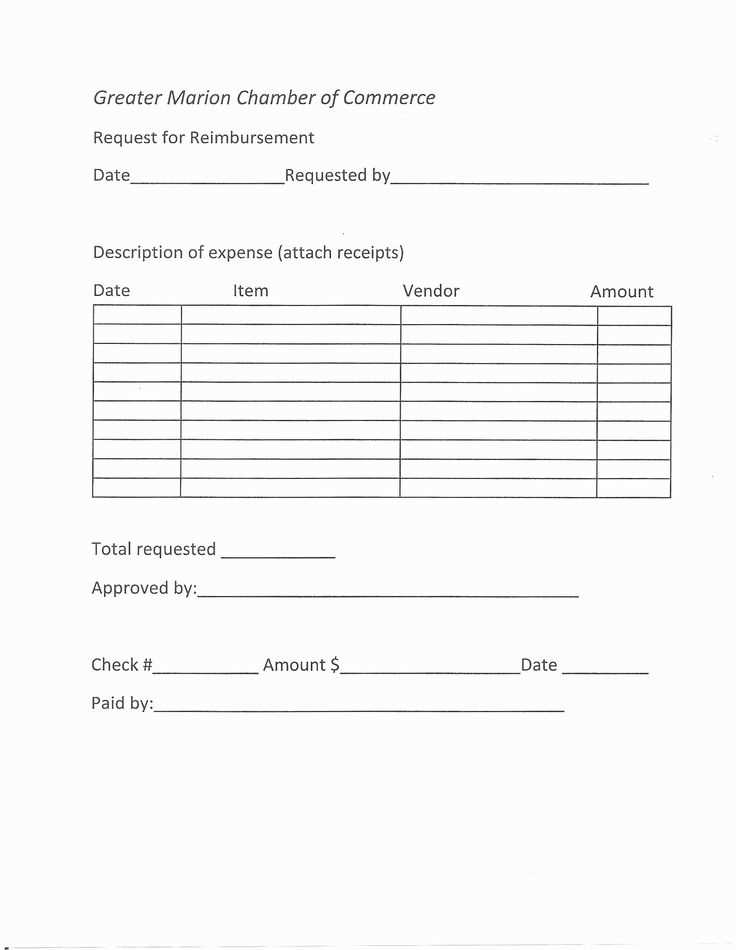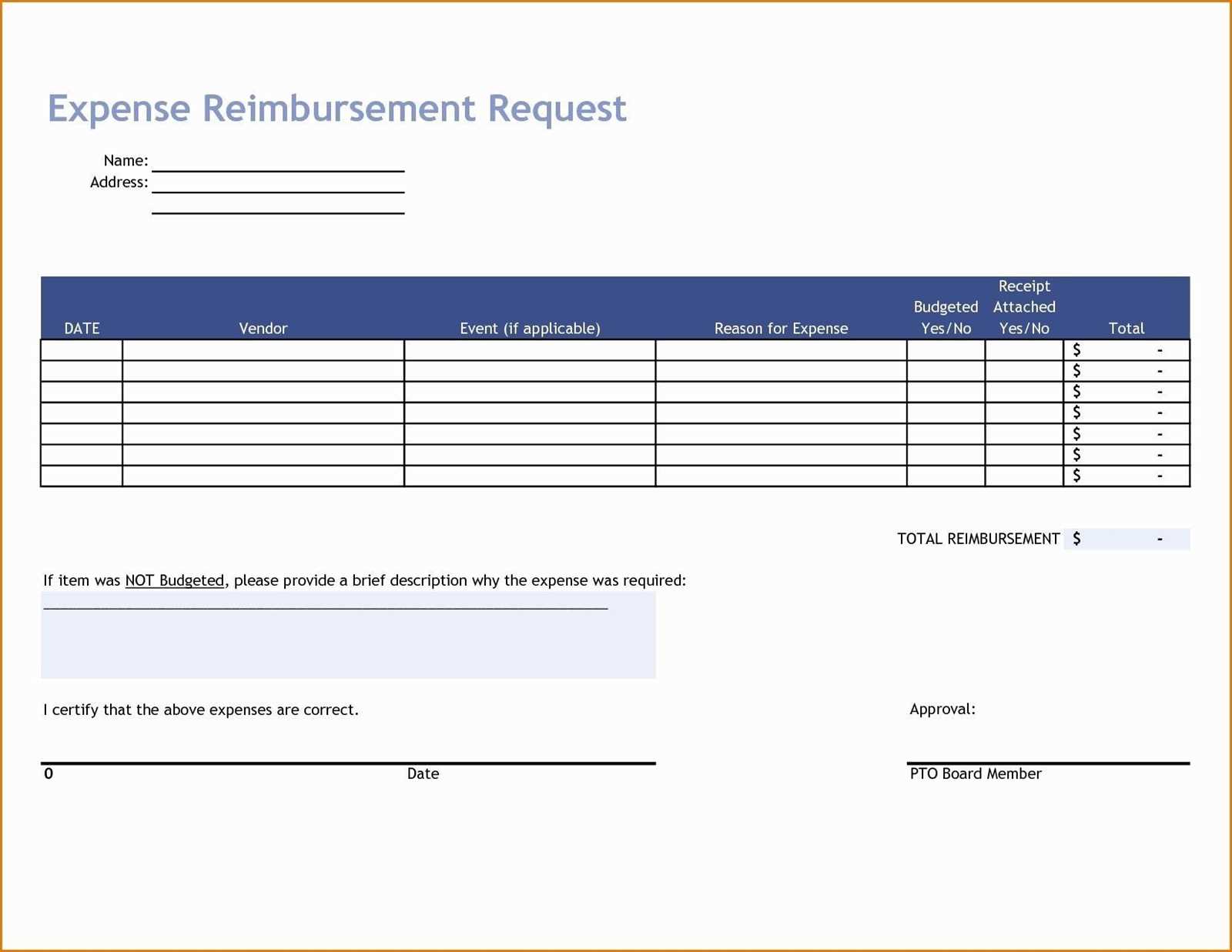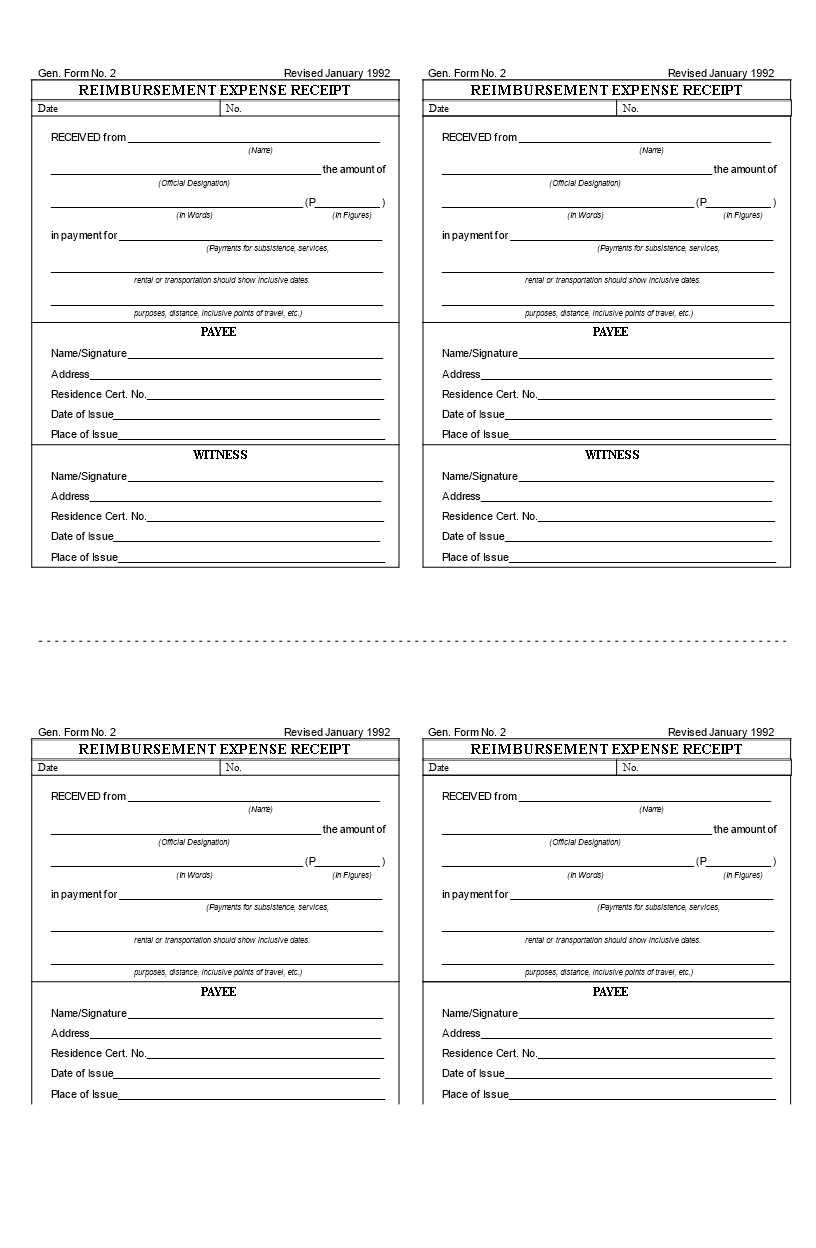
How to Create a Simple Receipt Reimbursement Template

Use this template to streamline your receipt reimbursement process and ensure consistency across submissions. Follow these steps to craft a clear and organized document:
- Title the Document: Label your template with a clear title, such as “Receipt Reimbursement Form.” This helps both parties identify the document’s purpose quickly.
- Include Claimant Information: Specify the name of the individual submitting the claim, department (if applicable), and their contact details.
- Provide Detailed Receipt Information: List each item purchased, including a brief description, quantity, price per unit, and total cost. Include the date of the transaction and any applicable taxes.
- Provide Total Reimbursement Amount: Clearly highlight the total reimbursement request at the bottom of the form.
- Approval Section: Include space for signatures or electronic approvals from the relevant authorities. This can be the supervisor or finance team.
Receipt Reimbursement Template Example

Here’s a sample of how the form could look:
| Claimant Name | [Name] |
|---|---|
| Department | [Department] |
| Item Description | [Item 1] |
| Quantity | [Qty] |
| Unit Price | [Price] |
| Total | [Total] |
| Approval Signature | [Sign] |
Additional Considerations

- Documentation: Attach scanned copies or photographs of the receipts to avoid confusion or disputes.
- Submission Deadline: Indicate when claims must be submitted, whether it’s within 30 days or by the end of each quarter.
- Policy Adherence: Ensure your receipts comply with any relevant guidelines or policies set by the organization or tax authorities.
By following this format, you’ll create a clear and organized reimbursement document that speeds up processing and reduces errors. Make sure all necessary fields are filled in and provide any supporting documents, as required. This will improve the efficiency of reimbursement approvals and make the entire process smoother for everyone involved.
Receipt Reimbursement Template: Practical Guide
Key Elements to Include in a Compensation Receipt
Formatting Guidelines for a Clear and Structured Form
Legal and Tax Considerations for Expense Documentation
Digital vs. Paper-Based Formats: Pros and Cons
Common Mistakes When Designing a Compensation Form
Adapting a Template for Various Business Needs
Start by clearly defining the date, amount, and purpose of the reimbursement on your template. This should include a detailed description of the expense and reference any applicable policies or guidelines, ensuring both parties understand the basis for the reimbursement. Contact details for both the employee and the approver should also be included for easy communication if clarification is needed. Ensure that the receipt includes a signature section for the employee and authorized approver to validate the expense.

Format the document to enhance readability. Use a table or grid layout for key details like amounts, dates, and categories of expenses. A well-organized, uniform layout ensures that the information is easy to scan and verify, minimizing errors. Use headings and subheadings to differentiate between sections like expense description, approval status, and payment details. If possible, include a clear total amount that breaks down individual costs to prevent confusion.

Address legal and tax requirements by ensuring that all expenses listed on the receipt are documented with proper invoices or receipts. This makes it easier to comply with tax regulations and allows for quick validation in case of audits. Keep in mind that some expenses may require additional tax forms or declarations, depending on your jurisdiction and the nature of the expense. Additionally, always provide employees with a copy of the completed form for their records.
Consider the format of your reimbursement receipts. Digital formats such as PDFs are easy to store and share but may require encryption or password protection to secure sensitive data. Paper-based receipts provide a physical record but may be prone to loss or misplacement. Weigh the pros and cons based on the needs of your business and the preference of your employees.
Common mistakes include vague descriptions of expenses, missing signatures, or incomplete data. These errors can cause delays in reimbursement and confusion. Ensure that the template is clear and straightforward, leaving little room for misunderstanding.
Adapt the template based on your organization’s specific needs. Different departments may have different types of expenses, such as travel, office supplies, or entertainment. Customize your receipt reimbursement template to reflect these differences, while keeping the structure uniform for ease of use across the company.


